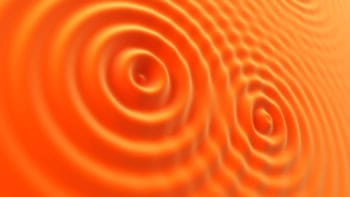
By Hamish Johnston
The GW170817 neutron-star merger was by no means an instantaneous event. Physicists working on the LIGO-Virgo gravitational-wave detectors were able to watch the two stars spiral towards each other for about 100 s before they merged. Valuable information about the neutron stars has been gleaned from the observation, but the detectors were unable to see the merger itself and its aftermath.
In “The gravitational-wave story of a neutron-star merger”, Jocelyn Read of California State University Fullerton takes up the story at 17 min before the merger. Then, the neutron stars would have been be separated by about 700 km and have an orbital frequency of about 10 Hz.
Read goes on to explain how the system slowly came into view as its frequency increased to about 30 Hz at about 100 s before the merger. As more data were accumulated and the frequency increased, she explains how key parameters such as the masses of the neutron stars were worked out.
In the final 2 s before the merger, the neutron stars were close enough for tidal forces to cause significant distortions of their shapes. This would affect the rotation of the system and should become apparent in the signal as its frequency reached hundreds and then thousands of hertz. Analysis of the high-frequency signal has not revealed any evidence for such distortions – which puts important limits on the radii of the neutron stars and the nature of the matter they contained.
Above 2000 Hz, noise overwhelmed the signal, so scientists could not follow the last moment before the neutron stars coalesced. Also, there was no high-frequency post-merger signal detected so the ultimate fate of the system is not known. There is good evidence, however, from electromagnetic observations that a black hole was in existence shortly after the merger.
Read’s piece appears on CQG+ blog, which is brought to you by the journal Classical and Quantum Gravity. The blog will no doubt be a source of many more nuggets of knowledge about GW170817.



